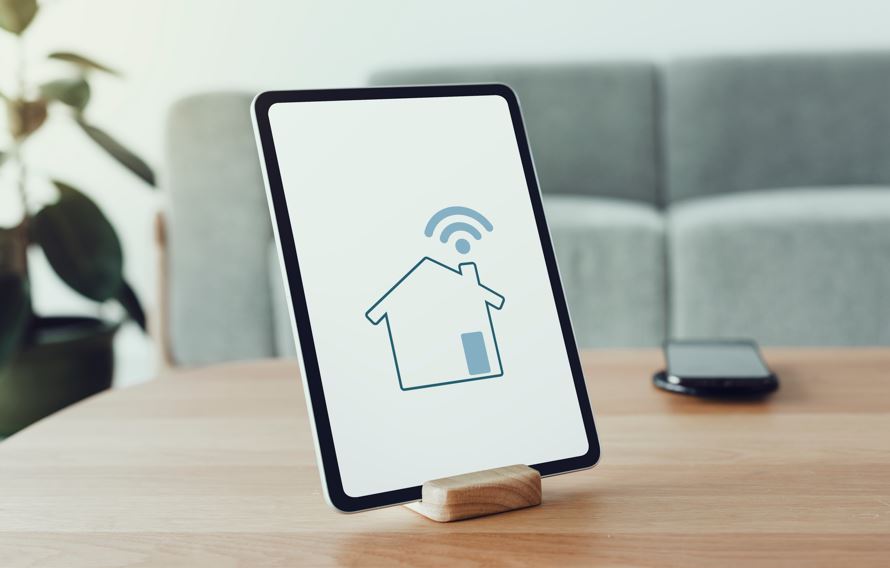How secure are your smart home devices
20th June 2024
Diane Marley
In a society where technology continues to integrate into our daily routines, smart home devices present users with advantages such as convenience, energy efficiency, enhanced security, and cost-effectiveness.
Nevertheless, these advantages are accompanied by potential drawbacks, including privacy issues, susceptibility to hacking, device malfunctions, and reliance on technology.
To safeguard the security of smart home devices, it is imperative to employ robust passwords, regularly update software, utilize a secure Wi-Fi network, restrict device access, and implement two-factor authentication measures.
The forthcoming discussion will delve into methods for shielding smart home devices against potential threats.
What Are Smart Home Devices?
Smart home devices are innovative IoT gadgets that leverage technology to automate and enhance various aspects of home living. These devices employ state-of-the-art technology to deliver convenience, security, and efficiency to homeowners.
They are meticulously crafted to seamlessly connect with other devices and networks, enabling users to remotely manage various functions such as lighting, heating, and security systems. This connectivity establishes a unified ecosystem within the home, where disparate devices operate in unison to streamline daily activities. From intelligent thermostats that adapt to individual temperature preferences to voice-activated assistants capable of responding to inquiries and setting reminders, these devices represent a paradigm shift in our interaction with residential environments.
How Do Smart Home Devices Work?
Smart home devices function via wireless connectivity, enabling users to remotely monitor and manage them. These devices establish communication with each other and central hubs to execute specific functions.
Utilizing a centralized system, smart devices like thermostats, security cameras, and smart lights can seamlessly exchange information. For example, if a motion sensor detects movement during the night, it can automatically activate the lights and inform the user through a mobile application. This interconnected network facilitates a more streamlined and convenient home environment, where devices collaborate based on predetermined configurations or immediate triggers to enhance security, energy efficiency, and overall comfort.
What Are the Benefits of Smart Home Devices?
Smart home devices provide a wide range of advantages, such as bolstered security features that safeguard homes against potential intrusions, sophisticated energy efficiency measures that lower utility expenses, and economical solutions that streamline household financial outlays.
1. Convenience
The functionality offered by smart home devices is rooted in their automation capabilities, which give the power to users to remotely control various aspects of their residences. One notable example is smart locks, which present an amalgamation of heightened security measures and convenience.
These technologies grant individuals the ability to secure and unseal their doors from any location through the utilization of a smartphone application or a voice prompt, effectively eliminating the necessity for traditional keys. This functionality not only elevates the level of security but also streamlines the process, particularly when authorizing entry for guests or service personnel.
Moreover, the integration of smart locks with other home automation systems establishes a coherent and interconnected network that simplifies everyday routines and augments the efficiency of household management.
2. Energy Efficiency
Smart home devices play a crucial role in promoting energy efficiency by allowing users to actively monitor and optimize their energy consumption patterns. Through personalized device configurations, users can implement settings tailored to their specific needs, thereby minimizing energy wastage.
By leveraging sensors and scheduling functionalities, these smart devices have the capability to track energy consumption trends and pinpoint areas where optimization is feasible. Users have the flexibility to customize settings in accordance with their daily schedules, such as regulating thermostat temperatures or managing lighting routines. This level of customization give the power tos individuals to make well-informed choices regarding energy conservation, leading to reduced electricity costs and the cultivation of a more sustainable lifestyle.
Furthermore, smart home devices offer users real-time insights into their energy consumption, enabling them to observe the immediate effects of their adjustments and promoting conscientious consumption practices.
3. Increased Security
One of the primary advantages of smart home devices is the increased security they provide, facilitated by functionalities such as surveillance cameras for monitoring, biometric authentication for access control, and the overall improvement of home security systems.
These innovative technologies play a pivotal role in securing your residential environment and deterring potential risks. By enabling remote monitoring of your property through surveillance cameras, they instill a sense of tranquility and give the power toment even during your absence. Biometric authentication adds an additional layer of security, guaranteeing that only authorized individuals can gain entry to your home. Through the incorporation of smart sensors and alarms, these devices are capable of promptly notifying you in the event of suspicious activities, thereby bolstering the comprehensive security measures of your residence.
4. Cost Savings
Smart home devices play a crucial role in cost savings through task automation, enhanced energy efficiency, and secure installations. These combined efforts result in decreased utility expenses and overall household costs.
Through the automation of tasks like regulating heating and cooling systems according to occupancy patterns and switching off lights during periods of inactivity, smart home devices effectively streamline energy usage. This optimization not only results in reduced electricity bills but also contributes to a decline in the overall environmental footprint.
Furthermore, the secure installation of these devices offers reassurance by protecting against potential security breaches or data theft, mitigating the risk of costly damages or operational interruptions.
What Are the Risks of Using Smart Home Devices?
Although smart home devices provide a multitude of advantages, they also present potential risks, such as privacy implications concerning data collection, exposure to cyber threats, including hacking, and vulnerabilities that could compromise the security of both the devices and user data.
A primary privacy concern associated with smart home devices is the continuous collection and monitoring of user activities, which could result in privacy infringements. These devices are frequently linked to the internet, rendering them susceptible to cyber threats and hacking endeavors. Should a smart home device become compromised, it not only places the user's privacy at risk but also introduces the likelihood of unauthorized entry to sensitive information housed within the device or its connected network.
1. Privacy Concerns
Privacy concerns related to smart home devices encompass issues concerning data privacy protection, the potential for privacy breaches, and the exposure to privacy risks resulting from data collection and sharing practices.
Users of smart home devices encounter difficulties in safeguarding the confidentiality of their personal information, as these devices continually gather data on their activities and daily routines. The storage and transmission of this data raise apprehensions regarding the parties with access to it and the security measures in place for its handling. The interconnected network of smart devices introduces vulnerabilities that could lead to breaches, exposing users to cyber threats and unauthorized intrusion into their private information. The ongoing exchange of sensitive data also prompts inquiries into the transparency of data sharing procedures among various service providers associated with these devices.
2. Vulnerability to Hacking
Smart home devices are susceptible to hacking attacks that can compromise their functionality and expose users to malware threats. It is imperative to implement robust security controls to protect these devices from potential breaches.
These security measures encompass protocols such as strong encryption, regular software updates, and adherence to secure password practices. In the absence of adequate protection, hackers can illicitly access smart home devices, enabling them to manipulate features such as thermostats, security cameras, and even door locks. This unauthorized intrusion not only disrupts the smooth operation of these devices but also presents a significant risk to user privacy and safety. By emphasizing security measures, individuals can enhance their defense against the extensive repercussions of cyberattacks on their smart home ecosystem.
3. Malfunctioning Devices
Malfunctioning smart home devices have the potential to endanger user safety and compromise privacy. It is crucial to ensure proper device configuration and conduct regular maintenance to mitigate technical failures and associated hazards.
In the absence of necessary precautions, these devices may malfunction, resulting in data breaches or unauthorized access, thereby jeopardizing the security of personal information. By remaining informed about firmware updates and implementing robust password protocols, the susceptibility to cyberattacks through device vulnerabilities can be notably minimized.
Regular inspection of hardware components for signs of deterioration and timely resolution of any identified issues can additionally augment the durability and dependability of the smart home system.
4. Dependence on Technology
Dependence on smart home technology may present challenges concerning access control and device monitoring. To effectively navigate this dependence, it is essential to establish secure access protocols and implement efficient monitoring systems.
One of the primary concerns associated with smart home technology is the susceptibility of access control systems to potential vulnerabilities, which could enable unauthorized individuals to gain access to sensitive data or manipulate devices. This highlights the critical need for robust security measures aimed at thwarting unauthorized access and safeguarding privacy.
Insufficient monitoring mechanisms can result in homeowners being unaware of possible security breaches or malfunctions within the system. By instituting continuous monitoring and alert systems, timely notifications can be provided, enabling the prevention of security incidents before they escalate.
How Can You Secure Your Smart Home Devices?
The security of smart home devices necessitates the implementation of robust protective measures, including encryption algorithms, advanced authentication protocols, and secure communication channels employing encrypted protocols.
These protective mechanisms are essential for safeguarding smart home devices against potential cyber threats and unauthorized access. Encryption plays a critical role in ensuring that data transmitted between devices and servers remains encrypted and protected from interception by malicious entities. Advanced authentication protocols are instrumental in verifying the identity of users or connected devices before granting access to sensitive information or control over the smart home system.
The establishment of secure communication channels through encrypted protocols creates a protected environment for data exchange, effectively thwarting malicious actors from eavesdropping or tampering with the communication. The adoption of secure protocols is imperative for upholding the integrity and confidentiality of smart home networks.
1. Use Strong Passwords
Utilizing strong and unique passwords is crucial to ensure robust authentication and establish a secure connection for smart home devices. Password management tools play a vital role in maintaining the integrity of passwords.
The implementation of strong passwords serves as a significant barrier against unauthorized access to both your smart home network and sensitive information. These passwords function as the primary defense line, effectively thwarting potential intruders from compromising your security.
Password management tools provide the convenience of generating intricate, difficult-to-crack passwords and securely storing them in encrypted databases. Additionally, they facilitate seamless password updates and rotations, thereby decreasing the likelihood of password-related vulnerabilities. This proactive strategy not only protects your smart home devices but also bolsters your overall cybersecurity posture.
2. Keep Software Updated
It is essential to regularly update firmware and security patches for smart home devices in order to safeguard them from vulnerabilities and ensure the implementation of the latest security protocols. The facilitation of this process can be achieved through the utilization of automatic updates and notifications.
Enabling automatic updates allows smart devices to promptly receive critical security patches and enhancements without necessitating manual intervention. This proactive strategy guarantees the efficient resolution of potential vulnerabilities, thereby reducing the susceptibility to cyberattacks or unauthorized access to interconnected home systems.
Notifications play a vital role in informing users about the most recent updates, give the power toing them to remain informed about the security status of their devices. This transparency cultivates a sense of control and peace of mind, reassuring users that their smart home environment is continuously fortified against emerging threats.
3. Use a Secure Wi-Fi Network
Establishing a secure Wi-Fi network with robust encryption protocols is essential to safeguard smart home devices against network vulnerabilities and unauthorized access. Regularly updating Wi-Fi passwords is imperative for enhancing network security.
A secure Wi-Fi network serves as a virtual shield, providing protection for smart home devices against potential cyber threats present on the internet. By implementing strong encryption measures, a digital fortress can be created around the devices, increasing the difficulty for unauthorized intruders to compromise network security. Consistent updating of Wi-Fi passwords adds an additional layer of defense, effectively preventing unauthorized individuals from accessing personal information and taking control of smart home devices.
4. Limit Access to Devices
Limiting access to smart home devices using robust access control mechanisms and intrusion detection systems is crucial for mitigating security threats. Regular risk assessments are essential for identifying potential vulnerabilities.
By implementing measures to ensure that only authorized users can interact with smart home devices, the risks of unauthorized access and malicious attacks are greatly minimized. Intrusion detection systems are pivotal in detecting any suspicious activities or unauthorized attempts to compromise the security of the devices. Risk assessments are valuable for pinpointing specific weaknesses that may be targeted by cybercriminals, enabling proactive measures to address these vulnerabilities before they are exploited.
5. Use Two-Factor Authentication
The implementation of two-factor authentication serves to enhance data security for smart home devices by necessitating users to provide two forms of verification. This cybersecurity measure functions to introduce an additional layer of defense against unauthorized access.
This supplementary security protocol serves to authenticate the user's identity not only through conventional methods, such as passwords but also by incorporating an extra step, such as a unique code dispatched to the user's mobile device or biometric verification. By mandating two forms of verification, the likelihood of a cybercriminal gaining unauthorized entry to the smart home network or sensitive data is significantly mitigated. This not only serves to safeguard the user's personal information but also fortifies the operational efficacy and integrity of the smart home devices themselves.















